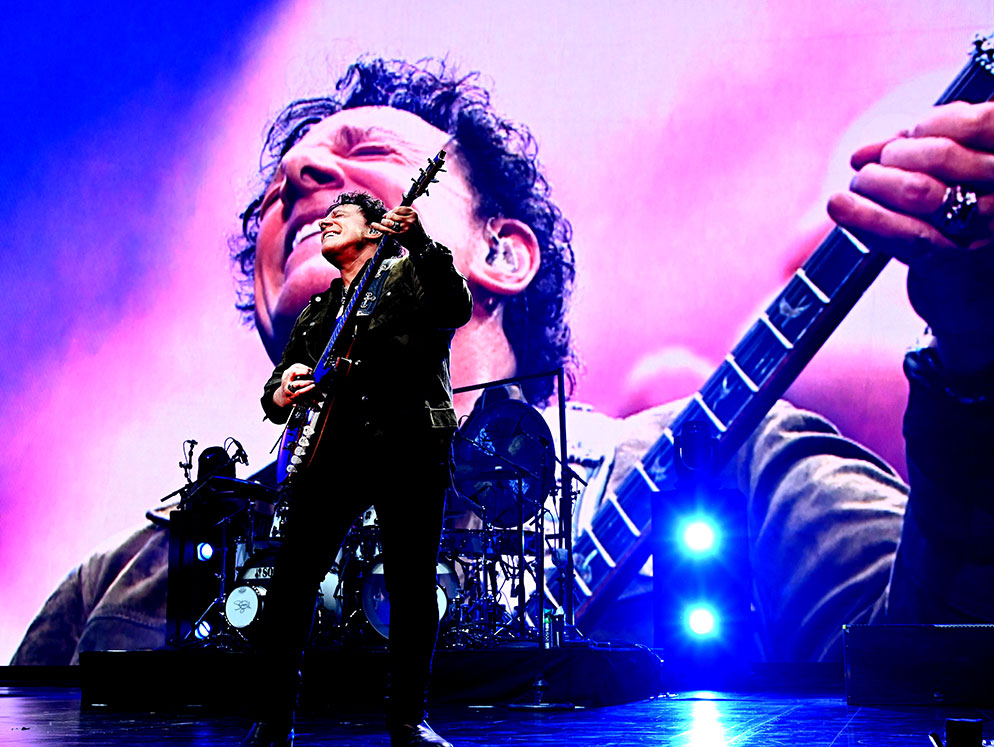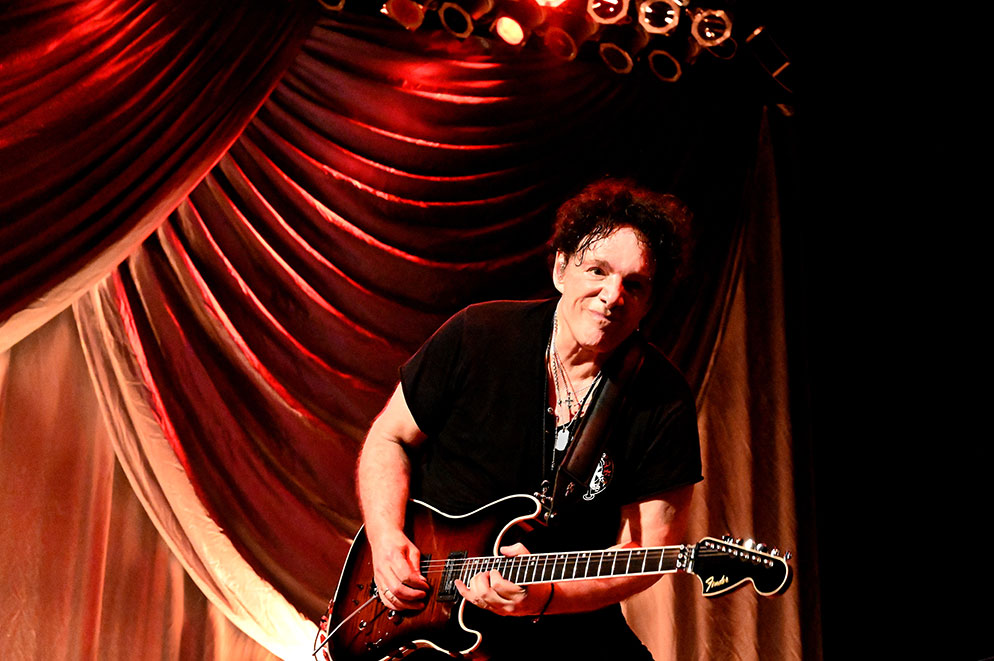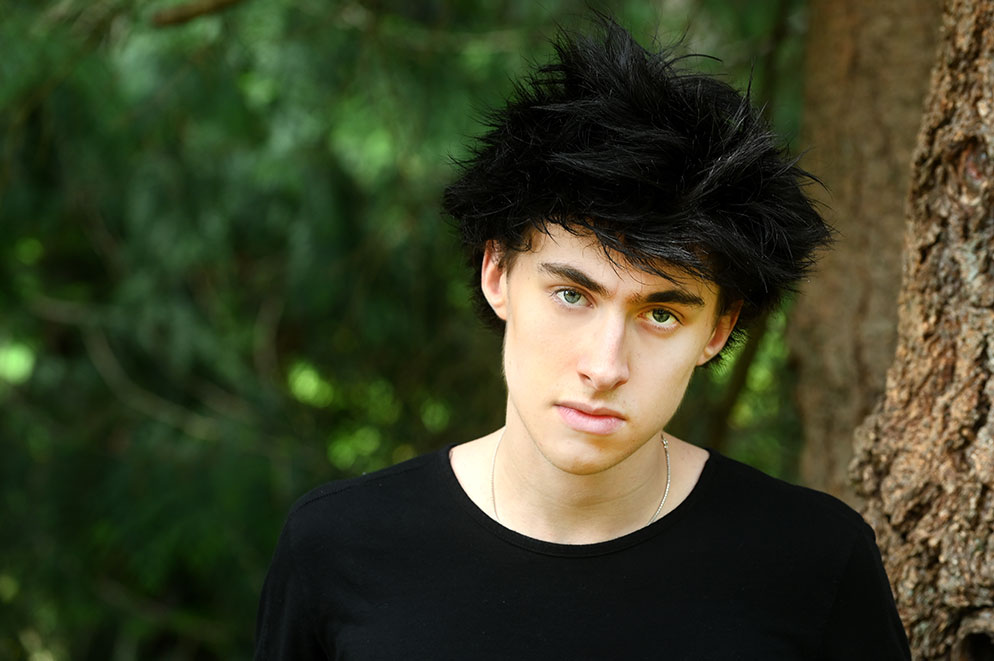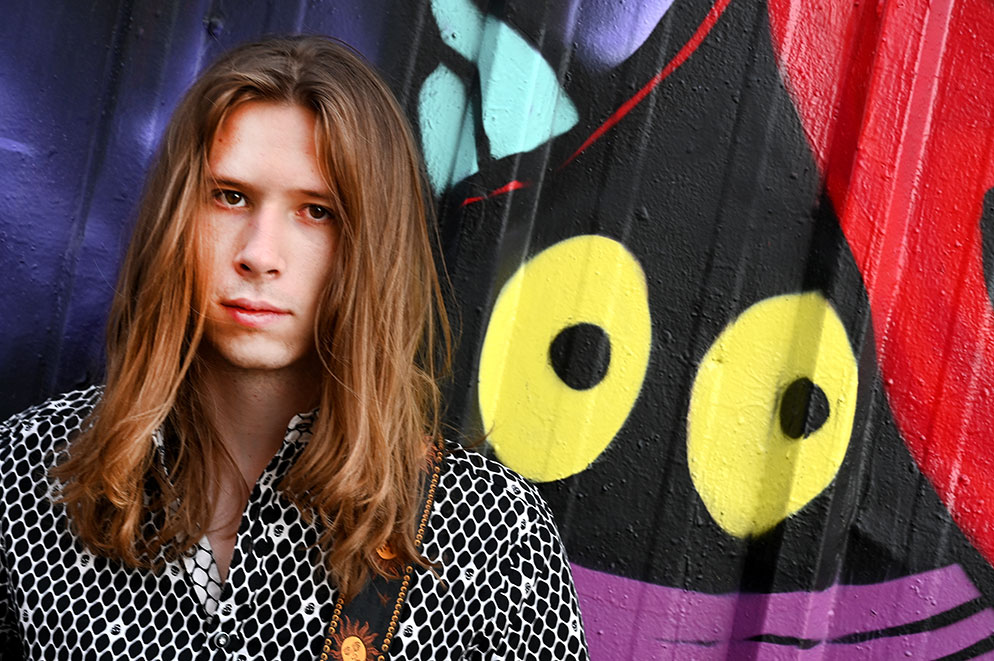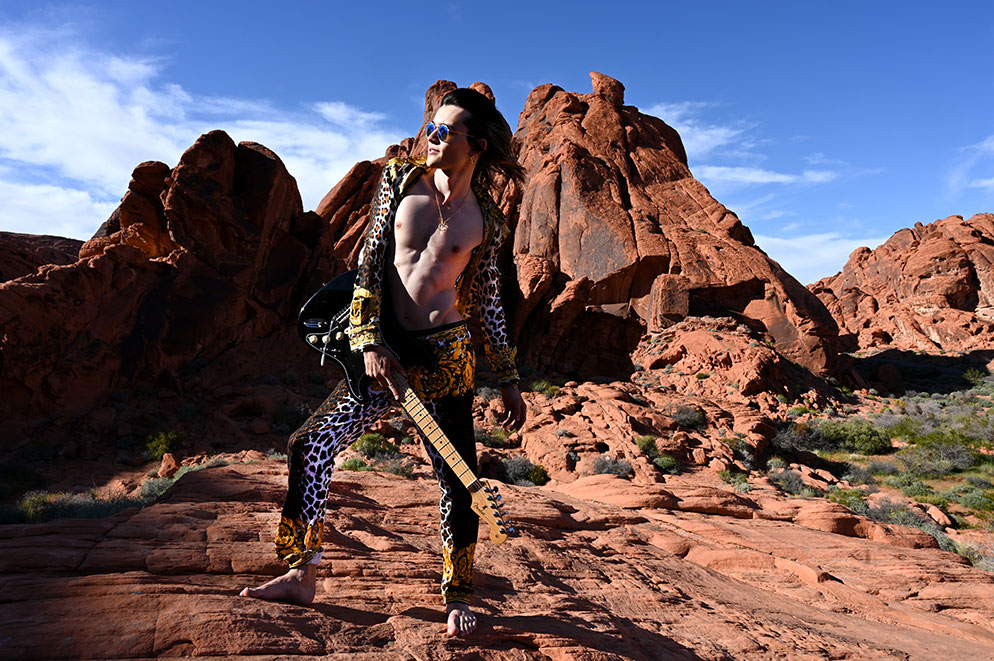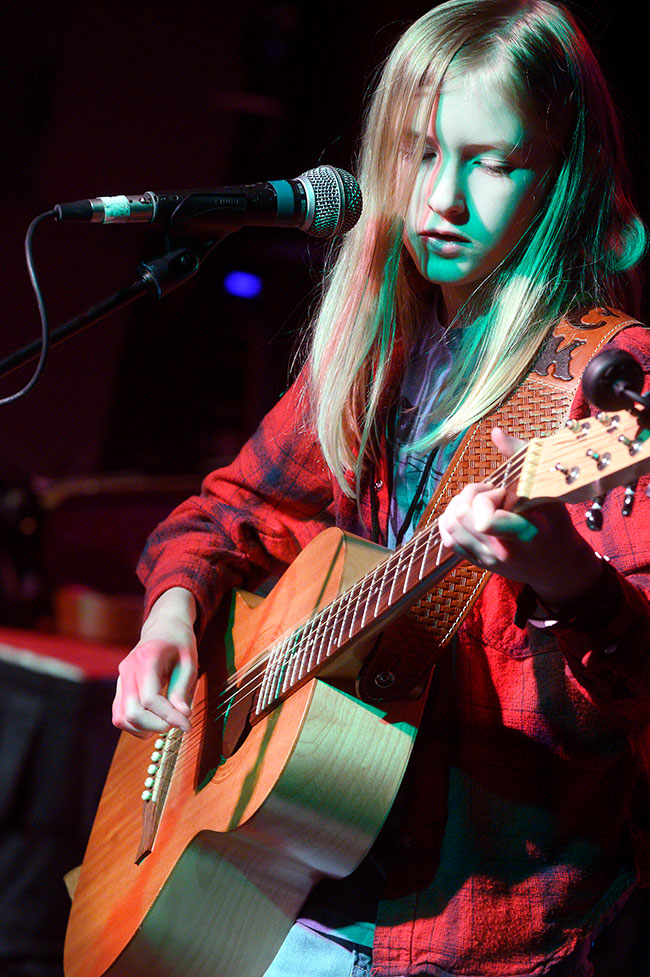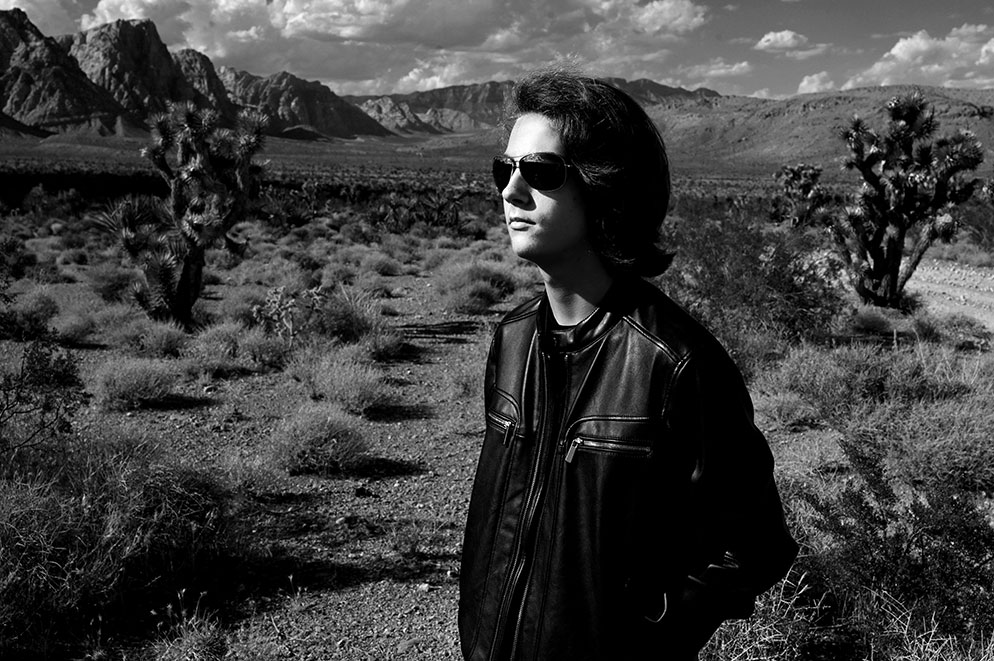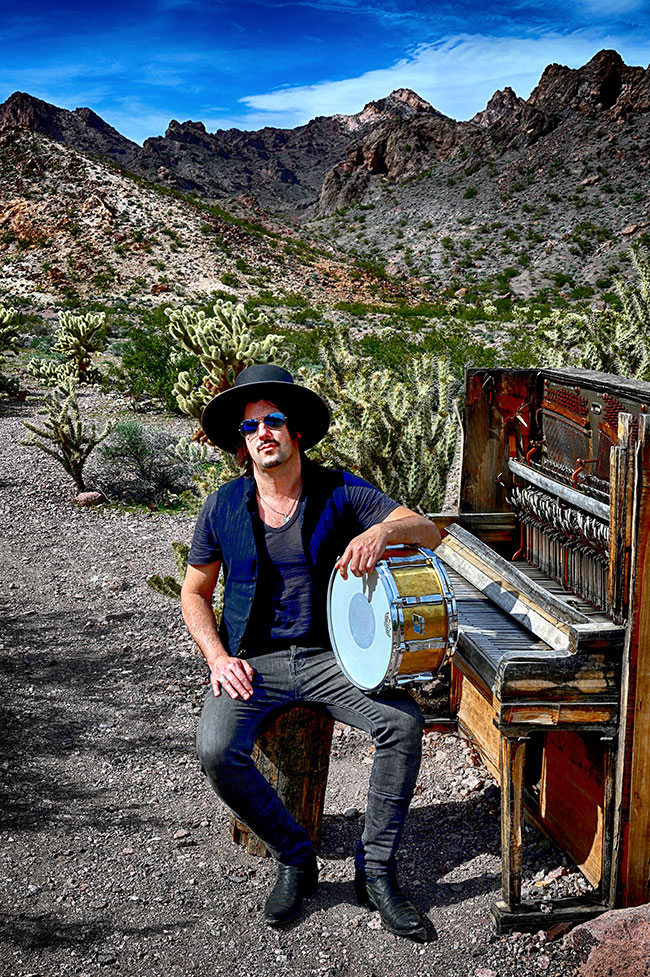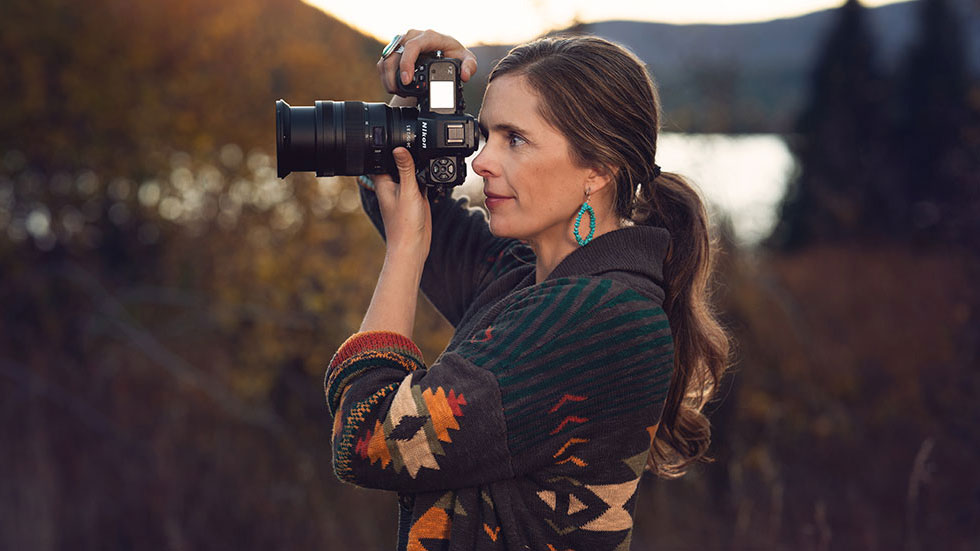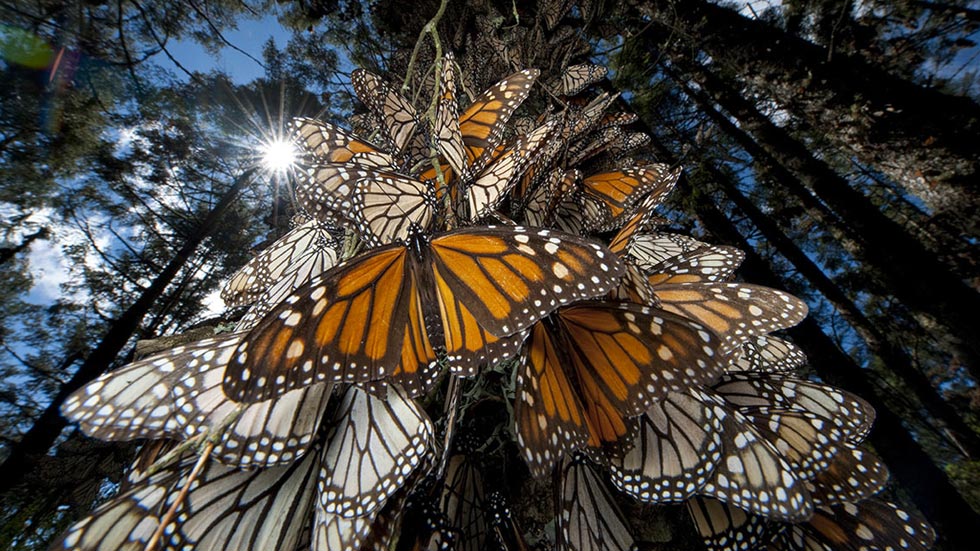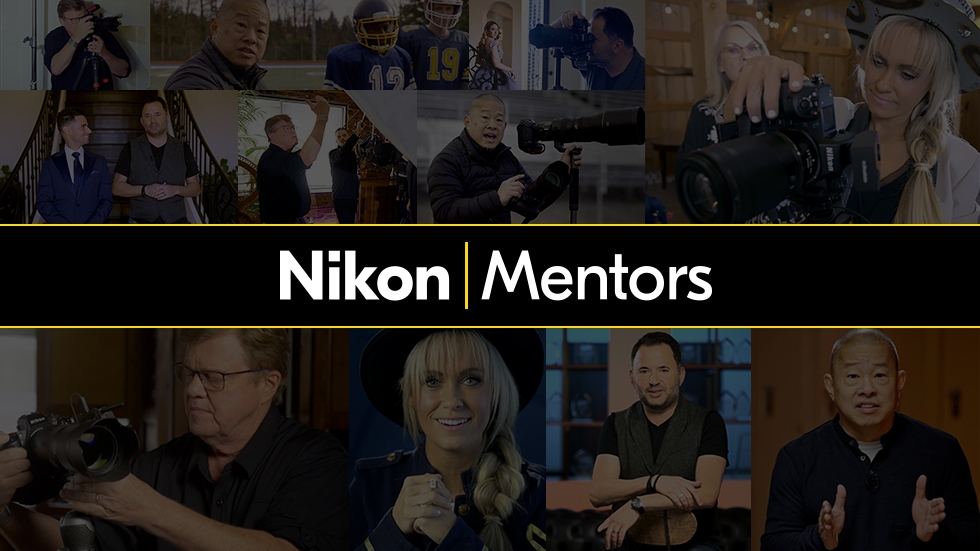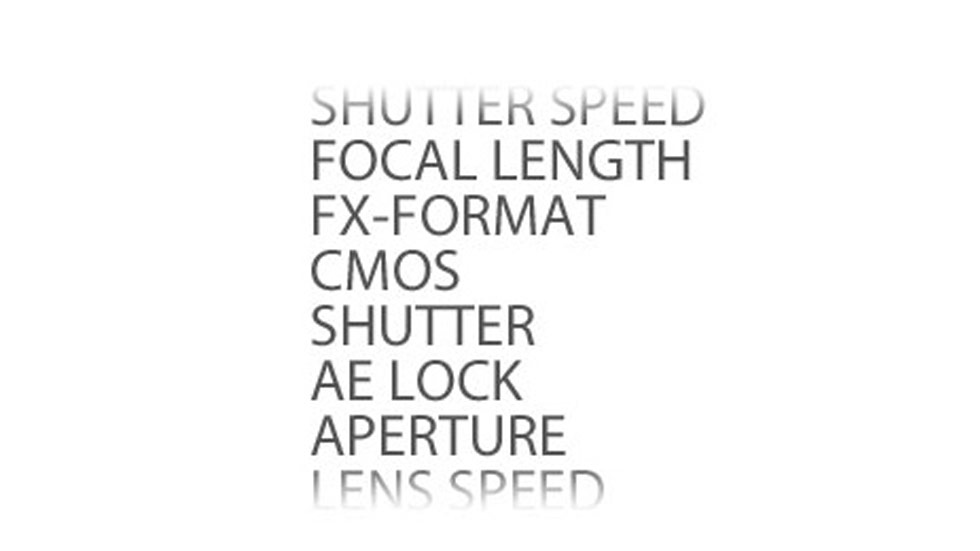"It's Better With the Z": On the Rock-and-Roll Road With Nikon's Mirrorless Marvel
Guitarist/songwriter Neal Schon of Journey is a long-time friend of Robert's. "Journey did about 20 shows in Las Vegas," Robert says, "and I shot them all. Neal is one of the best guitar players I've seen. Most people slot him into the pop band category, but the reality is this guy's a stellar guitar player." Z 6, NIKKOR Z 24-70mm f/4 S, 1/320 second, f/8, ISO 3200, manual exposure, Matrix metering.
Change doesn't bother Robert Knight. In his long career as a travel photographer, and his side project as a photographer of rock and roll performers and their performances, he's embraced it.
Robert's been a Nikon shooter from the start, starting out with film, easily adapting first to digital and then, not too long ago, switching to mirrorless. The film-to-digital move was pretty much effortless; in fact, the workflow difference was more of an adjustment than the method of capture. The advantages of digital were obvious and immediate: "As a concert photographer I was kind of bound by 400 ISO film," Robert says, "and I had to processes it myself if I pushed it to 1200. Imagine if I'd had a digital camera when I was working with Jimi Hendrix. At one Hendrix concert I shot only 14 pictures—they were good pictures, but still...."
And the move from DSLR to mirrorless? "It's better with the Z," Robert says of photographing with his Z 6. "First, there's the size and weight. When I picked up the Z 6 camera, I thought, This thing doesn't weigh anything—can it possibly have the punch and the resolution of the big camera? And I wondered about its capability when it came to keeping up with performers in motion."
This photo of guitarist/songwriter Neal Schon was taken in Los Angeles during a performance on Journey's tour. "Neal loves to play to the camera," Robert says of this eye-contact image. Z 6, NIKKOR Z 24-70mm f/4 S, 1/500 second, f/9, ISO 51,200, manual exposure, Matrix metering.
The Z 6's road test was Robert's 2019 tour with Journey. "I shot every show with the Z 6 and I got spectacular stuff at high ISOs," he says. "The Z 6's quality ISO performance was a necessary complement to its weight and size advantage."
It was equally important that the images look as good on paper as they did on a monitor. Robert's rock-shot prints are sold in galleries around the world, and he's found the Z 6 easily capable of producing quality enlargements. "The JPEG comes out at 16x20 inches," he says, "and 30x40 is about the biggest size that I sell. No problems and no issues there."
Along the test tour he found another advantage: the smaller camera and his two go-to lenses—"because of the access I have, I can actually shoot concerts with two lenses—the 24-70mm Z lens and my 70-200mm from the DSLR days"—make for easier, less obtrusive shooting backstage and while traveling. "It's like your tradecraft is so good, you don't need all that other stuff."
So if you ask Robert about change, he'll tell you it's more than welcome.
Brotherhood of the Guitar member Asher Belsky at home in San Francisco. "I like working by available light," Robert says, "and with this camera you get incredible resolution and detail." Z 6, NIKKOR Z 24-70mm f/4 S, 1/20 second, f/7, ISO 100, manual exposure, Matrix metering.
Caspian Coberly in the great outdoors of Vashon Island, Washington. "He's a guitarist, a model, a producer—and only twenty," Robert says. Z 6, AF-S VR Zoom-NIKKOR 70-200mm f/2.8G IF-ED with Mount Adapter FTZ, 1/100 second, f/9, ISO 500, manual exposure, Matrix metering.
The Z 6's ISO performance was a necessary complement to its weight and size advantage.
Robert took advantage of the colorful graffiti in the arts district of Las Vegas for a photo shoot with Dylan Koski, a member of the Brotherhood of the Guitar. Z 6, NIKKOR Z 24-70mm f/4 S, 1/60 second, f/11, ISO 500, manual exposure, Matrix metering.
In the Valley of Fire, north of Las Vegas. "An amazing place for a photo of an amazing musician—Gabriel Gianelli," Robert says. "He flew all the way from his home in Italy to do the shoot with me." Z 6, NIKKOR Z 24-70mm f/4 S, 1/125 second, f/13, ISO 100, manual exposure, Matrix metering.
Mentoring the Music
When he's not giving his Z 6 a performance workout (he took over 25,000 images on the Journey tour), these days find Robert working on behalf of and photographing for the Brotherhood of the Guitar, an organization he co-founded to commercially mentor young guitarists.
To understand Robert's commitment to giving back to the music business and furthering the careers of young musicians, it helps to know that photographing rock and roll was always his passion, never his job. He decided early on he wouldn't make a living at it, and he turned instead to his second love: travel and tourism photography. Over the years he was able to photograph rock and roll by planning his business trips to coincide whenever possible with rock concerts and club appearances.
"He might be 12," Robert says of Jack Barksdale, "and last year, at the Dallas Guitar Festival, he came out and absolutely blew everybody away with his acoustic playing." Z 6, AF-S VR Zoom-NIKKOR 70-200mm f/2.8G IF-ED with Mount Adapter FTZ, 1/250 second, f/11, ISO 3200, manual exposure, Matrix metering.
Taken at Red Rocks, Nevada, in color, Robert later converted this image of Jacob Reese Thornton to black and white. "I became aware of him when he was 14, and I was stunned by his guitar ability—he's a singer/songwriter/guitarist who's far beyond his years." Z 6, NIKKOR Z 24-70mm f/4 S, 1/250 second, f/11, ISO 100, manual exposure, Matrix metering.
Now his attention is fully on music and helping young musicians achieve at least notice, at best success through the Brotherhood's sponsored program of spotlighting upcoming guitar players, some of whom you'll see in the accompanying photographs.
"The Brotherhood of the Guitar is basically me and my friends in the music industry giving something back by supporting and promoting talented up-and-coming artists," Robert says. "We want to give them a spotlight to showcase their talents."
And if that spotlight happens to transform their lives...well, that change, too, will be more than welcome.
"Jason Sutter has played drums with Cher, Chris Cornell and Marilyn Manson—he's pretty much one of the top touring drummers in the world," Robert says. "He's a collector of photography, and he bought a lot of my photographs and asked me if I'd do a shoot with him. I took him down to Nelson, Nevada, and we shot at a ghost town that's a fabulous set for movies and still sessions." Z 6, NIKKOR Z 24-70mm f/4 S, 1/200 second, f/13, ISO 100, manual exposure, Matrix metering.
"Kelsi Kee is a singer who performs with one of the members of the Brotherhood. Amazing voice and range. I shot this at the Dallas Guitar Festival when she was performing there." Z 6, AF-S VR Zoom-NIKKOR 70-200mm f/2.8G IF-ED with Mount Adapter FTZ, 1/160 second, f/7.1, ISO 800, manual exposure, Matrix metering.
Picture You
Any thoughts of following in Robert's footsteps? It's a different music world these days, but it's not an impossible dream.
"The key now for any young, aspiring rock photographer is to know that just being a photographer isn't enough," Robert says. He's not talking about having a fallback position; he's confronting the nature of the business.
"If you can write, and are a bit of a journalist, get associated with a publication [online or otherwise] or a reasonable blog, and if you know what you're doing, reach out to an upcoming band or their publicist. Many bands will actually allow young photographers to shoot. The idea is to find a young band, help that band and ride the rocketship with them. I've done that my entire life, over and over."
Robert's first rocketship was Led Zeppelin. He was the first American photographer to work with them, and they never forgot that. "When they got to be the biggest band in the world, I could still reach out and they'd let me in."
Ideally what happens is that once you do something really cool with or for a band, other people will notice. "The most important photography you can do—photography that really has value—isn't the show," Robert says. "Everybody's shooting live, and it all looks the same. But if you can get offstage, backstage, into sound checks—anything that gives you an edge over the people shooting from the pit—that's the key. Of all the pictures I did in my early life, the most valuable stuff was offstage. Try to go there." And if you get there, remember that the musicians have to trust you. Be unobtrusive, aware and sensible. Shooting backstage can be as much about your personality as it is about your photography skills.
Likewise, shooting from the pit is about more than technical skill; it's also about knowing what not to do. Robert names a well-known front man/singer/guitarist and says, "Okay, you're in the pit and he's in front of you and you're getting your shots. Then he goes to the other side of the stage—and if you move with him, he'll flip out. You have to know that. Many performers are like that. They'll come back to you—they know you're there—but when they move, don't move with them."
Then he names a world-famous guitarist. "He loves what I do, but he's like, Just don't let me see you. So the trick with him is finding places to shoot from where he doesn't see me."
Then he names a lead singer. "He doesn't like to be shot from the side, only straight on. If you get your chance, you have to know these things."
Knowledge is the ultimate key. "There are a lot of concert photographers," Robert says. "They shoot only concerts and they pretty much hold the shutter release and move the camera around. And then there are music photographers, and they might have studio knowledge and lighting knowledge, and they're good at offstage portraits and have greater professional depth. My advice is be a music photographer."


